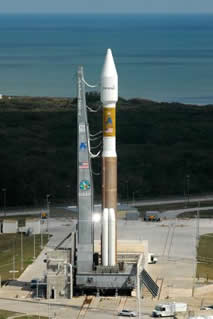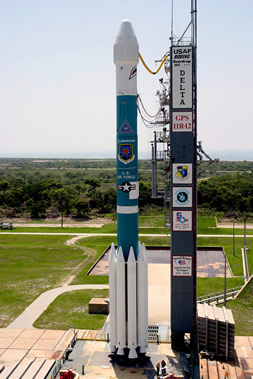A satellite is sent into space on top of a rocket. When a satellite is put into space, we say that it is “launched.”
The rocket that is used to launch a satellite is called a “launch vehicle.” Below are pictures of some launch vehicles currently used to put satellites into space.


The first stage of the launch vehicle contains the rockets and fuel that are needed to lift the satellite and launch vehicle off the ground and into the sky. The rockets have to be very powerful because a launch vehicle at lift off weighs hundreds of tons. After all the fuel has been used up, the first stage is no longer needed and breaks off and falls to the ground. Don't worry, though, the launch vehicle operator makes sure that it falls in an uninhabited area where there aren't any people or buildings!
The second stage contains smaller rockets that ignite after the first stage is finished. The rockets of the second stage have their own fuel tanks. The second stage is used to send the satellite into space. Like the first stage, it breaks off after all the fuel has been used up and burns up in the Earth's atmosphere.
The upper stage of the launch vehicle is connected to the satellite itself, which is enclosed in a metal shield, called a “fairing.” The fairing protects the satellite while it is being launched and makes it easier for the launch vehicle to travel through the resistance of the Earth's atmosphere. The fairing splits apart once the satellite is above the Earth's atmosphere and burns up in the Earth's atmosphere. The rockets of the upper stage fire after the satellite is in space and put the satellite in the exact spot where it is needed.
Once the launch vehicle is out of the Earth's atmosphere, the satellite separates from the upper stage. The satellite is then sent into a “transfer orbit” that sends the satellite higher into space. Once the satellite reaches its desired orbital height, it unfurls its solar panels and communication antennas, which had been stored away during the flight. The satellite then takes its place in orbit with other satellites and is ready to provide communications to the public.
No comments:
Post a Comment